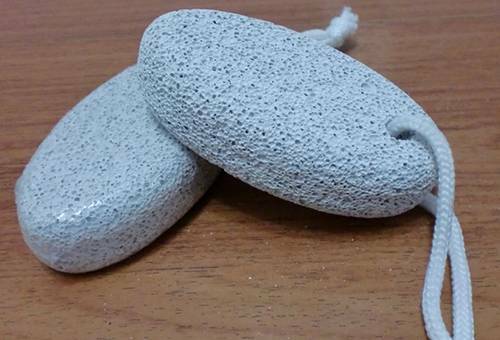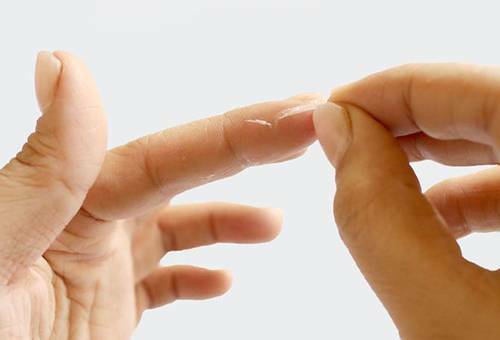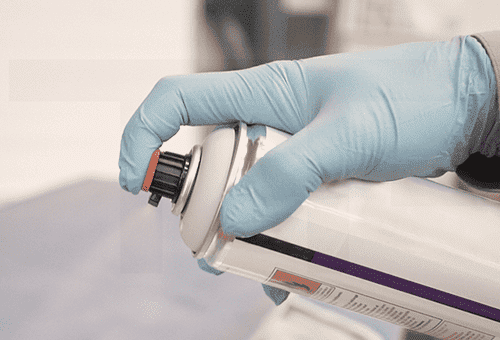Contents:
- Is it really necessary to dispose of sealant residues?
- Removal of sealant with White Spirit
- Knife and pumice
- Removal of sealant with wet salt
- Removal of sealant from human skin
- Special means for removing sealant
After repair, the owners receive unpleasant surprises in the form of stains left from building materials: paints,oils, cement, sealants. .. Today we will consider the most correct options for answering the question of how to gently wash off the silicone sealant, and also discuss whether it is necessary to get rid of this reminder of the old remthe covariant works.

Is it really necessary to dispose of sealant residues?
Yes, it may seem strange to many, but we could not not answer it. In general, silicone sealant at first glance does not seem to be something that can spoil the appearance. For example, sealed pipes in the bathroom or toilet are not bad at all, but, on the contrary, inspire confidence: in the near future, do not expect leakage. But the sealant is not always used when working with plumbing. During the installation of windows, for example, they are smeared with slits, and it happens that on the window frame there remains an unpleasant and very noticeable drop of some substance. This drop will inevitably accumulate a thin layer of dust, it will be very difficult to wash it off. That is why we recommend after repair, during cleaning, get rid of all unwanted stains of silicone sealant, so that later on you do not try to remove all the detestable and very noticeable pollution.

Removal of the sealant with White Spirit
"White Spirit" is a universal solvent that can help to wash almost everything, including silicone sealant. So, to remove the sealant with the help of "White Spirit" you will definitely need the following list of items:
- itself, the "White Spirit" itself( or some similar in strength to the action of the substance);
- rag( preferably - from cotton, but in the absence of such a suitable and synthetic);
- small blade or, in its absence, a knife.
"White Spirit" is applied to a rag, and it is wiped with a sealant stain.
Warning!
Observe precautionary measures: work better with gloves, as the solvent can have the most negative effect on the skin of the hands.
After thirty-thirty-five seconds, you can try to remove the stain by cutting it with a blade. For a thick layer, you may need a longer interval, and if necessary, you can even leave a rag with the solvent directly on the spot( if, of course, the working surface allows - on the plastic is better not to take risks, but the tile is completely resistant to the solvent, so you can lay the rag straighton the stain).If after the removal of the stain there is a trace, it should also be rubbed with a cloth with "White Spirit".

Knife and pumice
This way on forums many Internet users have nicknamed "hard" - from the English word hard, means "hard" or "aggressive".However, this method is very effective, and therefore we considered it necessary to describe it in more detail. Its essence is simple. In the process involved only two means: a knife and pumice, which makes this option the safest for the hands of the owners and for their health in general. Everything is done very simply: first with a knife a large part of the contamination is cut off, a silicone bump, if any. Then, with the help of pumice and knife, the remains are scraped off, and eventually the sealant completely disappears. After that, you can simply rinse the surface, and if necessary apply a non-aggressive powder or gel. However, we will clarify once again: this method is very dangerous for the surface, in particular for soft coatings, for example mirrors or glossy tiles, and therefore it should be used only in the most extreme cases, and in general - be considered as the most-the most reserve option.

Removal of sealant with wet salt
In comparison with the previous method, this will seem something so safe that it is even inoperative and not having a right to exist. On the contrary, removing silicone sealant with salt is the most accurate solution, since it is both practical and accessible to everyone, and safe for the skin of hands and health in general. To proceed with cleaning is simple: just make a small swab from the bandage or gauze cloth, and then fill it with moist salt. After this, the affected surface must be rubbed in a circular motion with a salt swab and follow the reaction of the sealant.

Removal of sealant from human skin
The most important thing to observe when working with all building materials, including sealant, is caution. There are times when silicone sealant freezes right on the skin of hands during construction work. To remove it, you can not use chemical agents, so as not to harm the victim. We advise you to use it in order to wash off the sealant, usual table vinegar or medical alcohol, applied to a cotton swab or a disc. With a slight movement, the tampon is applied to the sealant patch, and then removed after half a minute. Usually in such cases, the silicone sealant itself will also come loose. The substances that we recommend to use are good in that they do not cause harm when they come into contact with the skin of the hands( and, in general, with human skin), and sometimes benefit the situation.

Special means for removing sealant
In modern hardware stores or hypermarkets of large networks, you can always find special tools that will help to remove silicone sealant neatly and simply. What is very important, many of these tools are made in such a way that they do not damage the skin of the hands during work, which is very important, especially for the fair sex. In addition, for the safety of hands, we strongly advise working with any substances( including those that should be safe) in gloves. Excessive vigilance never hurts!
So, to wash away the silicone sealant from different surfaces - the task is not always simple, but always solvable. The main thing at the same time is to observe the precautionary measures in order not to damage the skin of the hands, the respiratory tract( the vapor of substances is sometimes dangerous), and also the surfaces that need cleaning. Successful cleaning!


